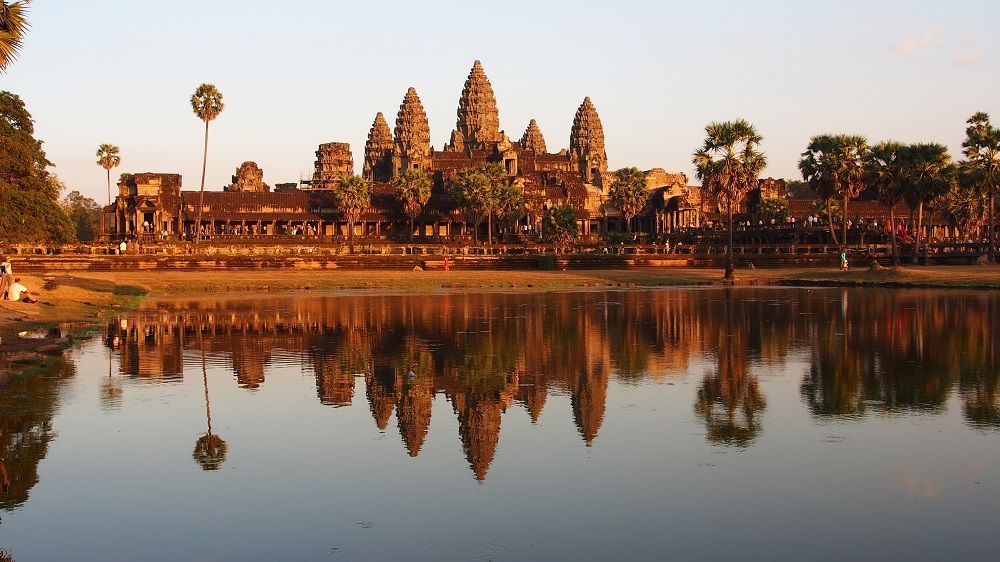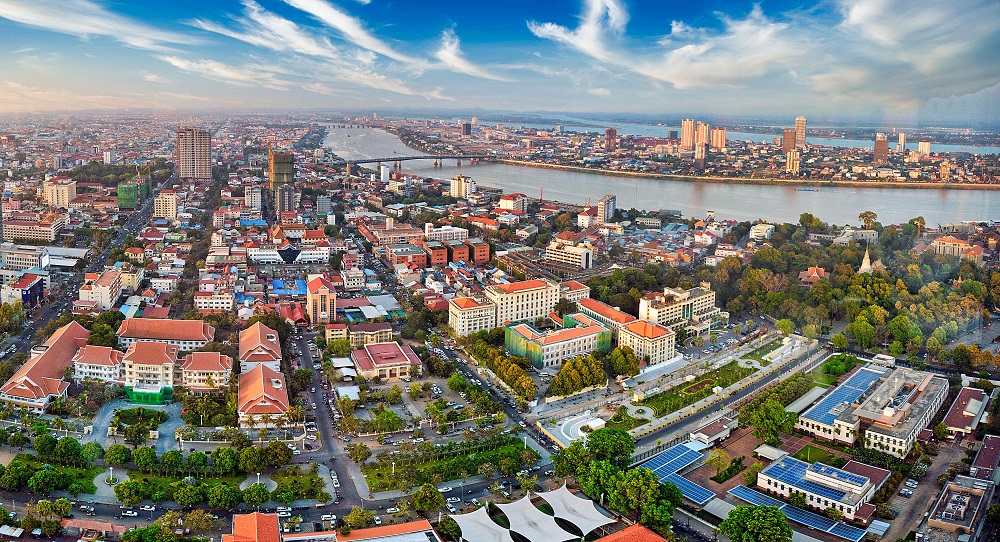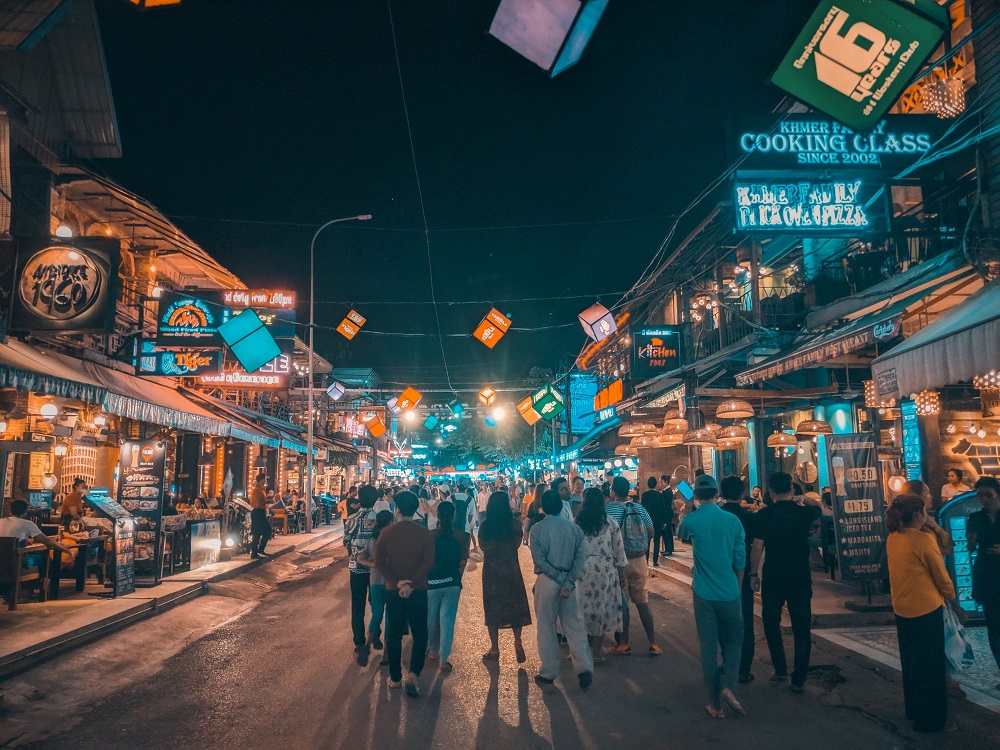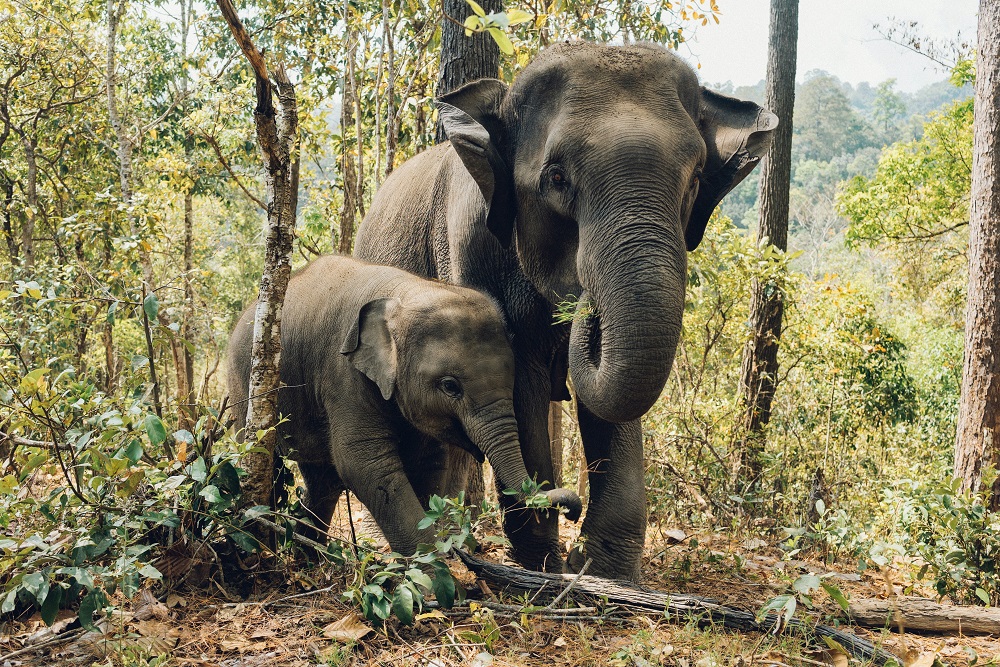Cambodia probably isn’t the first Southeast Asian country that pops into your mind when you’re considering visiting Asia, with holiday-hotspot Thailand and up-and-coming Vietnam often overshadowing the small but populous country.
Yes, war and poverty once shook the land and its people, but Cambodia has been transformed in recent years, rebuilding to become a destination that absolutely must be considered when you’re looking for your next far-flung vacation away from the City.
Bordered by Thailand to the northwest and Vietnam to the east, Cambodia is steeped in culture, wildlife and beauty. It is popular with sightseers, explorers, foodies, beach bums and luxury-seekers alike, being the perfect blend of old and new, and of rural and urban.
The Southeast Asian country is awash with lush landscapes (think, untouched rainforests, pristine beaches and stunning rice paddies), ancient temples, fascinating museums, buzzing marketplaces, luxurious resorts and activities galore.
 You’ll struggle to find friendlier people than the Khmer – throughout the country, the inhabitants are keen to welcome you and show off their wonderful home. You’ll meet individuals eager to practice their English with you, families who want nothing more than to cook you a traditional dinner and guides longing to share with you their beautiful country.
You’ll struggle to find friendlier people than the Khmer – throughout the country, the inhabitants are keen to welcome you and show off their wonderful home. You’ll meet individuals eager to practice their English with you, families who want nothing more than to cook you a traditional dinner and guides longing to share with you their beautiful country.
All of this – along with the Cambodia’s rich, yet tragic, history – brings in travellers from around the world.
Cambodia offers a magical assortment of experiences – with 27 municipalities, it’s impossible to summarise the country in a mere few pages. But rest assured that whatever kind of vacation you’re after, Cambodia can satisfy.
So, read on to learn more about Cambodia, why it should be next on your holiday bucket list and where to go.

History
Cambodia’s times of peace and prosperity are greatly overshadowed by its periods of political conflict. French colonialisation, Japanese occupation and the Khmer Rouge left the economy in tatters, cities totalled and millions of people displaced or dead. Unknown to many, between the years of 1975 and 1979, Cambodia endured one of the largest genocides worldwide to date, led by the Khmer Rouge.
After winning the civil war, Marxist dictator Pol Pot set about creating an ‘agrarian communist utopia’ and ‘master race’ through social engineering and by executing ‘enemies’ of the regime, including monks and priests, political opponents and educated people country-wide – essentially, anyone he felt threatened by. In four years, Pol Pot and his Khmer Rouge had isolated Cambodia from the global community, resettled hundreds of thousands of the country’s city-dwelling people into rural farming communes, abolished currency and killed more than two million Cambodians.
After years of turmoil, in 1979, the Vietnamese Army invaded Cambodia, removing Pol Pot and the Khmer Rouge from power. With the Vietnamese support, Cambodia sought to rebuild its country and people, and re-establish ties with the world. Since then, the country and survivors of the Khmer Rouge genocide have opened up about their experiences, and though it hasn’t been an easy path, Cambodia has transformed into a beautiful, friendly and blossoming country that draws people from all walks of life.
There are plenty of museums, monuments, places and people around Cambodia that will help you to dive further into the nation’s history, including the Killing Fields and Tuol Sleng Genocide Museum, both in Phnom Penh.
Food and drink
Eating is a multi-sensory experience in Cambodia that brings everyone together. You’ll see families crowded round long restaurant tables sharing meals, punters lining up in the street to grab an on-the-go dish from a curb side vendor, and friends enjoying food and lively conversation on blankets at night markets.
Packed with salty, sweet, spicy and sour flavours, traditional Khmer food blends influences of Indian, Chinese and French cuisine as well as neighbouring Thai, Vietnamese and Lao cuisines. The country’s staple is rice, indeed, the Khmer word for ‘to eat’ is ‘nam bai’, which translates to ‘eat rice’! It’s often served alongside veg and fish-packed soups, spicy curries, crispy vegetables, tangy salads and herby stews.
Cambodia is also known for its drinks, with beer taking a special place in the heart of locals, for whom it can be said have a very high drinking capacity! Even in remote villages, you’ll find small shops selling beers like Angkor and Tiger, which are more often than not cheaper than bottles of water. Wine is also abundant, with local brews made from rice wine taking the top spot. Yet it isn’t all about alcohol; the Khmer people are known for their sweet tooth tastes, with sugary iced coffees fuelling the days of locals living in the cities.
Must-visit destinations
Learning about Cambodia’s dark past might not be for everyone, but that’s OK – there’s a plethora of places to discover and things to do. Whether it’s relaxation, temples or nightlife you’re after, there is something for all. Here are our top five destinations.

Phnom Penh
The once-ravaged, resurgent capital of Phnom Penh is where most visitors choose to start their Cambodian journey, and it’s no surprise. The city is a buzz of life and tuk tuks – the best way to get around. Simply hail over a tuk tuk or order one through Grab (a very handy app), share your destination with your driver, haggle a price and jump in.
If you’re looking for culture, head to the National Museum, where you will see treasures and artworks aplenty, or visit the splendid Royal Palace. Gleaming in gold, the palace is probably the greatest architectural achievement in the city.
Make sure you go to view the Silver Pagoda, located in the southern portion of the Royal Palace Complex – it’s a marvel. Other temples to tackle in the city include Ounalom Pagoda, and the wonder that is Wat Phnom – located on the only hill in Phnom Penh. The large Buddhist temple is the tallest religious structure in the city, offering magnificent views.
Shop-a-holics are spoilt for choice in Phnom Penh, which is home to great swathes of markets and malls. For an authentic Cambodian shopping experience, visit Central Market. The art deco building has four wings filled with sellers of gold and silver jewellery, antiques, traditional clothing and accessories, and much, much more. If you prefer a calmer shopping experience that panders to more luxurious tastes, you will favour Aeon Mall, located riverside and home to well-known clothing brands, restaurants, a food court and even a cinema.
As much as the city is a-buzz during the day, Phnom Penh comes alive at night, when bars and restaurants are inundated with the hungry and thirsty people living, working or holidaying there. Make sure to visit the weekend Night Market, based on the riverfront close to downtown Phnom Penh.
Grab yourself some local street food and a cold beer, mull your way through the various stalls and wares, and experience how the locals spend their weekend nights. For a more refined evening, head to Elephant Bar at Raffles Le Royal. The iconic saloon has become something of an institution in Phnom Penh, renowned for its afternoon tea, tapas plates and exuberant cocktails – plus it’s 30-strong gin offering.
To taste traditional Cambodian eats in a sit-down setting, you can’t do much better than cosy Kabbas, situated near the National Museum of Cambodia. Local favourite dishes include the creamy amok curry, beefy lok lak and kuy teav noodle soup.

Siem Reap
Also known as the ‘city of ancient ruins’, Siem Reap is most famous for being home to the sprawling temple complex that is Angkor. The UNESCO World Heritage Site is one of largest religious monuments in the world, as well as one of the Seven Wonders.
Make sure to wake up early during your visit and witness the sun rising over the main building Angkor Wat, with its 650ft-wide moat reflecting every ray of light. Book a guide to take you around the complex, starting at sunrise and ending at sunset, but you really need three full days to see it all.
Siem Reap isn’t all about temples; there are a great many things to do in the city: vibrant night markets, traditional craft shops, boat tours on Tonle Sap Lake, bird sanctuaries and the renowned Pub Street, a real hit with younger vacationers. One of the best times to visit Siem Reap is during Khmer New Year celebrations, taking place mid-April. Locals hit the streets to welcome in the New Year via water fights and talc bombs – it’s great fun but prepare to get messy just stepping out of your hotel.
Mondulkiri
If you’re a nature and animal lover, add stunning Mondulkiri to your list. The jungle is home to several elephant sanctuaries, as well as guides running hikes and other experiences through the rolling hills and thick, lush forests. It can be difficult to establish ‘good’ from ‘bad’ elephant sanctuaries but avoid any that offer rides or similar experiences. Instead, visit the pioneering Elephant Valley Project.
The sanctuary operates as a kind of elephant retirement project and works with local mahouts to rescue and rehabilitate overworked or injured elephants. Set in 1,500-hectares of verdant jungle in a mountain valley, Elephant Valley Project strictly prohibits elephant riding or other invasive interactions – you can simply walk through the forest with the elephants and observe them going about their own business.

Koh Rong and Koh Rong Sanleom
Down on the south coast, you’ll find a smattering of tropical islands, complete with white sand, colourful fish, gorgeous sunsets and up-and-coming beach resorts. Two of the most popular are sister islands located next to one another – Koh Rong and Koh Rong Sanleom.
Which island you choose will depend on what you are after – Koh Rong is more developed, with plenty of eateries, hip beachside bars, fancy resorts and activities to enjoy day and night, whilst Koh Rong Sanleom offers a more relaxing, remote paradisiacal experience. For the best beach in Koh Rong Sanleom, head over to Saracen Bay – with crystal clear water, it’s perfect for snorkelling or kayaking, whilst its perfect sand makes a pleasant spot for sunbathing.
It is possible to go between the two islands if you want the best of both worlds – boats and ferries are available for hire or taxi. Whichever island you stay on, make sure to head to a beach after dark to see the natural phenomena that is bioluminescent plankton; it’s an absolute spectacle.
For the latest headlines from the City of London and beyond, follow City Matters on Twitter, Instagram and LinkedIn.









